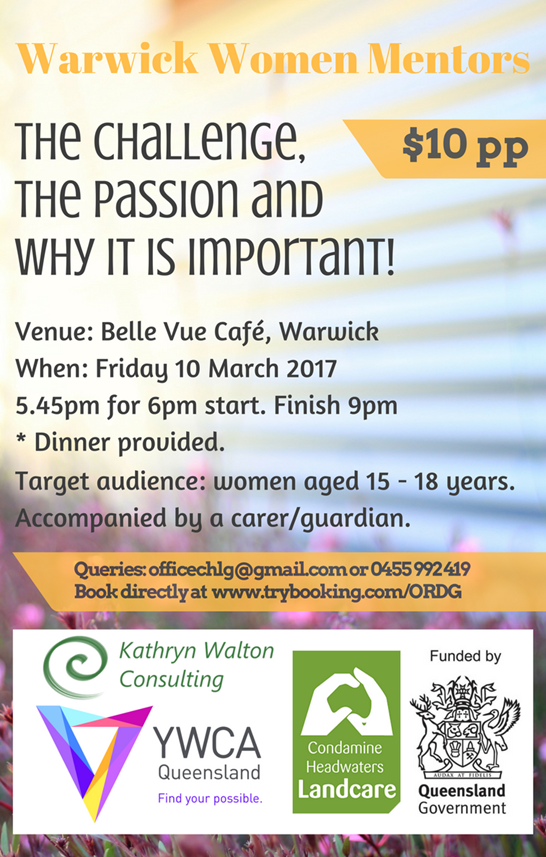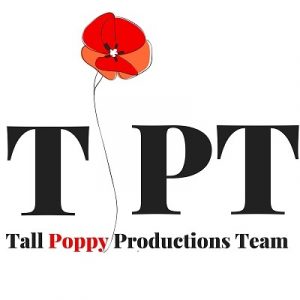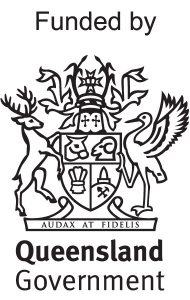BUILDING AND NURTURING COMMUNITY (DALVEEN COMMUNITY HALL)
Transcript from the podcast “Speak Out Loud: Stories of Strength from the Southern Downs”
SEASON 2: EPISODE 3
GUEST: Nathan Parkes, President Dalveen Sports Club
PUBLISHED: 22nd February 2022
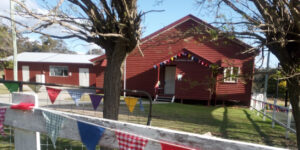
[00:00:00] Nathan: When I moved here, I was told about the Friday nights at the Dalveen Hall. So I came along to meet the locals and enjoy a beer and a meal. I found it to be a great community. The locals are very welcoming and I’ve been coming to the hall ever since.
[00:00:20] Kathryn: Nathan Parkes joins me on the podcast today. Nathan is the president of the Dalveen Sports Club which is housed by the Dalveen Community Hall. The hall is a hub for this vibrant community that’s located between Warwick and Stanthorpe on the Southern Downs. There’s so much going on at the hall, so many opportunities to connect with locals and visitors, to get involved in volunteering and with community groups. And this community has some really innovative ideas that Nathan shared with me in this conversation. And I’m excited to share them with you too, so that you can also be inspired to take action. Hello, Nathan. And welcome to the podcast.
[00:01:03] Nathan: Thank you.
[00:01:04] Kathryn: Nathan, can you tell us what’s your connection with the Southern Downs and even with the Dalveen community specifically?
[00:01:11] Nathan: All right. Well, my wife and I, we did the tree change thing about 17 years ago, this coming June. So we both gave up careers in the city. I worked in construction and my wife worked in scientific research and we moved to the country so that our children could be raised in a country environment. I had a, uh, a good friend move here and he encouraged me to come along and have a look at some property in the area. And I fell in love with with the place. We moved here when our eldest boy was one. I now have three boys, all of which were schooled at the Dalveen State School and are now in their last years at high school. So I’ve held various positions within the club and I’m currently the president of the Dalveen Sports Club.
[00:01:48] Kathryn: What is the hall currently being used for? It’s quite an establishment here. There are a number of buildings and a number of different functions.
[00:01:58] Nathan: Yes. Yeah. It’s quite a large area that the land itself is owned by the council. And on that land, we have the Dalveen Hall, and the oval. And also we have the Dalveen Rural Fire Brigade facility. So it’s a large area, numerous buildings. We all sort of work together. The Dalveen Sports Club supports the, the fire brigade and vice versa. So yeah, it’s, a great establishment and it’s an establishment that’s been funded by community. It’s been fundraised and built by the community for the community. I could confidently say the Dalveen Hall would be one of the most well utilised halls on the Southern Downs. So in terms of, of use, I’ve got a bit of a list here I’ll refer to. The hall is used for a number of things. We have CWA craft groups here every fortnight. We have CWA monthly meetings. They hold the Biggest Morning Teas and other fundraising events at the hall. The Sports Club hosts community dinners every Friday night except public holidays. It also has its holds its meetings monthly. We have a subcommittee of the Dalveen Sports Club called the Dalveen Film Society. They hold monthly meetings and bi-monthly movie screenings. We have another Sunday sewing group held every fortnight. The Wild Dog Management Group have their monthly meetings here. The Dalveen State School regularly utilise the hall and the oval for their school and inter-school sports. The Dalveen CWA have held a Christmas Tree here every year for the last 96 years. So that’s a celebration Christmas celebration that the CWA put on for the community. We have a group called the Darling Downs Drifters which hold three day events yearly. We have community meetings with councillors, the electoral commission hold their polling for federal and state elections. We have private bookings for functions. They can be birthdays, engagements, weddings wakes, Queensland Fire and Emergency Services hold training and public information sessions in the hall.
Other events, such as hosting the Darling Downs Tractor Trek which is happening later in the year, other fundraising events, and this year the Dalveen Film Society will be supporting the Apple and Grape Festival by screening two Italian theme films during the festival week. We’ve hosted recently a small horse festival show as part of the Drought Resilience Tour. And today it’s being used for free haircuts prior to the return to school and that’s been put on by the Granite Belt Neighbourhood Centre.
[00:04:13] Kathryn: That’s quite a list. No wonder you needed to have list in front of you there Nathan.
[00:04:17] Nathan: I know. I couldn’t commit all that to memory.
[00:04:20] Kathryn: There are many halls that serve as community hubs in the rural communities and the villages right across the Southern Downs region. And we were hearing about the halls and the rural fire sheds a couple of years ago, being used as hubs during the drought to distribute water to people who needed it. And then we were hearing about the halls during the bush fires as a meeting place for the community to share information and to share management plans as well. So there are lots of things happening in these halls across the region. Coming back to the Dalveen Hall, how else does the Dalveen Hall, this whole establishment here, benefit the community as well as the individuals who live locally?
[00:05:07] Nathan: Well, during the drought, most of the water distribution in the southern end of the Granite Belt was carried out through associations like Granite Belt Water Relief. I would say that our club played a vital part in sustaining the mental health of the local community by providing a community hub where people could come together to enjoy a drink and a meal and chat with other people going through similar situations. In terms of the other natural disasters like bushfire, the Dalveen Hall and the oval is recognised by Southern Downs Regional Council as a neighbourhood safe place. During the bush fires of 2019 we had a number of people turn up, but unfortunately we weren’t able to operate as a, a safe place because power to the village had been cut. A neighborhood safe place should be able to provide a place for people that have come together during times of natural disasters to share and receive information and feel safe. It was after this, that the hall committee got together with the Dalveen Rural Fire Brigade and decided to get to seek funding together for the supply and installation of backup generator power for both the shed and the hall in the event of power outages. And it’s hoped we will be successful in seeking grant funding to make this happen at some point in the future. In terms of the other community benefits over the years, the Dalveen Hall committee has been an active advocate for the community and serves as an unofficial, I guess you call it a progress association for the village. So the whole is the community heart of our village. And it’s home to an active and proud community. Council recently developed an urban design framework for the village in consultation with some key stakeholder groups like the Dalveen Hall and the fire brigade and the school. And also the Dalveen locals. So during the development of this urban design framework or UDF, a key message from the community was the desire for council to continue to improve and upgrade community meeting spaces and support local community groups. Through this framework, the hall has also advocated promoting Dalveen as the gateway to the Granite Belt, investigating the possibility of a new tourist drive commencing at Dalveen, developing heritage trail linking local Dalveen heritage sites, upgrading the toilets at Jim Mitchell Park, exploring the opportunity of installing coin operated barbecues in the park with those funds being invested back into community projects, investigating the potential to deliver additional community units to the town centre as part of the new planning scheme and that’s to allow our local residents to age in place, supporting the club in grant applications for the installation of power and water to the oval to allow for RV friendly camping outside of use by the Dalveen Rural Fire Brigade and council as a neighbourhood safe place during periods of natural disaster and supporting the club to build an amenities block on the oval for use in these times. Council, as part of their planning review, their planning scheme review have also indicated they’ll review subdivision allotment sizes around the village to create opportunities for people to move to the area and support the village’s existing infrastructure. And whilst these initiatives won’t happen overnight, the urban design framework has given the Dalveen community a voice with council and an opportunity to set its own future direction. A couple of years ago, the Dalveen fire brigade in conjunction with the hall fundraised to install a theatre system in the hall which could be used for fire training purposes, community information nights. The last 12 months has seen the formation of the Dalveen Film Society subcommittee and their success in gaining a grant for the installation of theatre curtains, reverse cycle air con and advertising to the value of about 40,000. So we’re now able to heat the hall during the cooler months, and it does get cold here in Dalveen and provide a more comfortable and pleasant experience for our visitors. The film nights have been incredibly well received across the district and they’ve sparked a wave of media interest. So we’ve had numerous interviews on ABC radio. We’ve had stories in local papers and magazines that have shone a positive light on the Dalveen Hall and the local community. We have the film nights are regularly sold out and they’ve been well supported. And we’ve recently received a grant again from council that will see a new front of house theatre curtain installed as well as some additional sound curtains to the walls prior to our Apple and Grape Festival screenings. So, it’s been a very important part of our community and it’s so much more than a hall. It provides that sort of community hub where people can come together and share stories and experiences and get things off their chest. We’ve had a terrible sort of period in terms of bush fires, drought, and now COVID-19 so, you know, for us locally to be able to supply, uh, to provide a place where people can come and just address any mental health issues they may have as you know, it’s a great facility. It’s a great facility and it’s really well used by the community.
[00:09:34] Kathryn: And it sounds like it’s a really important place for socialising and having fun, relaxing. It’s not all about the seriousness of what’s going on out there.
[00:09:45] Nathan: No. That’s exactly right. So predominantly, you know, we get together once a week on a Friday. We have a fantastic team of volunteers that come together and we have a volunteer cooking roster. They provide a meal, uh, which can be purchased. We have a licensed bar that operates, and we have a pool table and yeah, it’s, it’s a great friendly family friendly social environment that people can come and, yeah get together and enjoy each other’s company.
[00:10:11] Kathryn: Nathan, you’ve referred to back in history a few times in terms of the hall and the Dalveen community. Can you tell us a little bit more about the history of the hall?
[00:10:22] Nathan: I’ll have to credit my mother-in-law for this information because she’s part of the, um, Dalveen Historical Society. So she’s been doing quite a bit of research on the hall and the local, the local area. It’s not quite clear when the first Dalveen Hall was built, but the first Dalveen Easter Sports Day was held on the oval in 1882. It appears that this was also the birth of Dalveen Sports Club. The hall quickly became the hub for a variety of sports and sports related events. By about 1927, the Warwick paper dubbed Dalveen the home of sport. With the oval at the back of the hall and the memorial tennis courts alongside, the hall became a hub for sports and sport related events. The Dalveen Easter Sports drew participants and spectators from the whole district. A Sports Queen was crowned. And a dance was held in the hall at the conclusion of the event. Indeed, the hall gained a reputation actually for having one of the best dance floors in the Warwick district. With the formation of the CWA in the 1920s, the hall became a venue for a variety of functions with catering provided by the CWA ladies. The annual CWA Christmas Tree was held for the first time in 1925. With a picnic afternoon at the hall, the annual Christmas Tree has been held at the hall every year since bringing together families from the Dalveen community. Last Christmas saw the 96th CWA Christmas Tree at the hall with many more to follow. So also travelling moving picture shows in the Dalveen Hall were popular with the local community and beyond. While their popularity waned over the years, the recently formed Dalveen Film Society brought their echoes of the past alive with bi-monthly film nights in the hall last year. Sometime in about 1937 to 38 the Dalveen Hall, the original Dalveen Hall was destroyed by fire. The community quickly set about erecting, a new hall with locally donated timber which was milled free of charge at the Dalveen saw mill. Members of the Sports Club and the CWA helped the builder Jack Smith when needed. Jack Smith conveniently lived next door to the hall grounds. The final task was construction of the brick stand for the copper, just outside the kitchen of the new hall. The bricks were made at the Dalveen brick work and laid by a local brick layer. The fire under the copper needed to be lit early so that the hot water could be provided for tea and coffee, as well as washing up. The boiling water was carried into the hall in old kerosene tins. The new hall was opened in 1939 in time for the annual Dalveen Easter Sports Day. All through its history the Dalveen Hall has been a venue for weddings, entertainment, community meals, celebrations, weddings, birthdays, and funerals and wakes.
[00:12:47] Kathryn: That’s an incredible history isn’t it? Really fascinating bringing in, the local skilled people to help out with the volunteers, to get that back on track.
[00:12:58] Nathan: It was quite a, it was quite a village, actually. It had its own saw mill. And it had a brick works and yeah, it was, yeah, it was a very, very, um, very sort of vibrant community.
[00:13:10] Kathryn: Yeah, sounds like it still is a very vibrant community.
[00:13:14] Nathan: Very much, so.
[00:13:15] Kathryn: Even though we’re living in a different world in a way aren’t we with a lot of these goods and chattels get transported from further afield these days rather than each community supplying them to themselves. Wow. What are your hopes, Nathan, for the hall as we move into the future?
[00:13:34] Nathan: Well, I’d like to see the Dalveen Hall Committee to continue to advocate for the community, and provide a community hub where people can come together and enjoy each other’s company through the good times and the bad times. I’d also like to see Council continue to see the value in community halls and recognise their importance within the comm unity. And I’d like to see Southern Downs Regional Council continue to support, improve and upgrade these community meeting spaces and support the local community groups that, that use the hall. I’d also like to see the hall source a passive income into the future. And we’re looking at doing that as I mentioned earlier, by providing some RV friendly camping around the perimeter of the oval so that we can continue to provide the services that we do to the community at little cost.
So that’s been recognised as well in the urban design framework and Council are supporting us with that. We have some other things as well. Some, some future goals and aspirations. One of them is to seek some grant funding to upgrade our kitchen to a commercial standard. And, um, there’s also some talk about the possibility down the track of subject to Council approval um, building a drive-in movie theatre on the oval.
[00:14:42] Kathryn: Wow, that would be wonderful wouldn’t it?
[00:14:44] Nathan: That’d be just something a bit different and unique. And I think unique for this area. So, you know, we could alternate between once a month we could have screenings once a month. We could do one inside and one outside. So yeah, something just a little bit different.
[00:14:55] Kathryn: Yeah, it sounds wonderful and it’s really great to have those hopes and goals for the future to work towards and have that collaboration and those partnerships happening in the community.
[00:15:06] Nathan: Absolutely.
[00:15:07] Kathryn: Nathan, is there anything else about the community or the hall that you wanted to share before we wrap up?
[00:15:13] Nathan: I guess Dalveen’s, it’s a very unique place. I grew up in the country. I grew up in a sort of a town of 4,000. Dalveen’s quite a small little village, but it’s, it’s unique in the fact that we have a very sort of proud, active community that are very pro Dalveen. It’s a remarkable place to live. And it’s just nice to be part of that. It’s nice to be part of a community that really want to push things forward and progress things. It makes doing it quite easy. And it’s in, in this sort of environment, you know, in a small village, we have a number of organisations. We have the Dalveen Rural Fire Brigade. We have the P & C. We have the Dalveen Sports Club and other organisations as we mentioned, the CWA. The lovely thing is, is that when someone puts the call out, everyone puts their hand up and it doesn’t matter how many hats you wear. You’ll quite often find that, you know, you’ve got members of the CWA that are members of the fire brigade that are members of the sports club that are members of the P and C, you know, but everyone puts their hand up and nothing’s a problem.
So when it comes to organising stuff, it’s shared by a lot of people and it’s quite easy to do. And I think that’s something very unique and it’s something that, in these days, you know, life is busy, but we always manage to get things done and, you know, I love it. I think it’s great. I always used to be on the lookout for nice place to live. I moved here and I’ve never looked since.
[00:16:30] Kathryn: Thank you very much Nathan for sharing your story. I think that a lot of individuals and communities can be inspired by how Dalveen is really nurturing their community and protecting it into the future.
[00:16:42] Nathan: It just goes to show that you can achieve anything. I mean, if you look around here at the assets, on this block of land, they’ve all been provided for and fundraised by the community, and there’s a lot of infrastructure here, and, um, unique place, great place to live. And like you say, an inspiration around the halls, anything’s possible. You’ve just gotta, work hard and, and have a vision, I guess,
[00:17:04] Kathryn: And chip away at it gradually.
[00:17:05] Nathan: Chip away gradually, that’s correct.
[00:17:07] Kathryn: Nathan, if any listeners would like to follow up on anything you’ve said by contacting one of those organisations or finding out a bit more about the Dalveen Hall, where’s the best place for them to go?
[00:17:18] Nathan: Well, we don’t have a website at this stage. There is a Dalveen Sports Club Facebook Page. There’s also a Dalveen Film Society Facebook Page and a Dalveen Community Facebook Page. Uh, the Dalveen Sports Club also produces a monthly newsletter called the Windy Ridge which is distributed locally via the post office and email. Contact details for committee members are sign posted at the hall. Alternatively, you can contact the Sports Club via Messenger and Facebook, and we can give you the relevant information.
[00:17:46] Kathryn: Thanks for listening to the Speak Out Loud Stories of Strength podcast with me, Kathryn Walton. I hope this episode inspires you to get involved and to get connected with your community. You can find the transcript and any links mentioned in this episode, in the show notes and please share the podcast with your friends. We acknowledge and pay respect to the past, present and future Traditional Custodians and Elders of this nation and the continuation of cultural, spiritual, and educational practices of Aboriginal and Torres Strait Islander peoples. Series Two of this podcast has been jointly funded under the Commonwealth and State Disaster Recovery Funding Arrangements 2018.

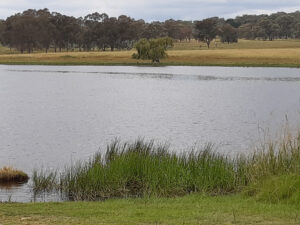
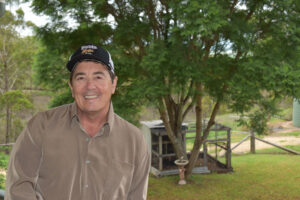

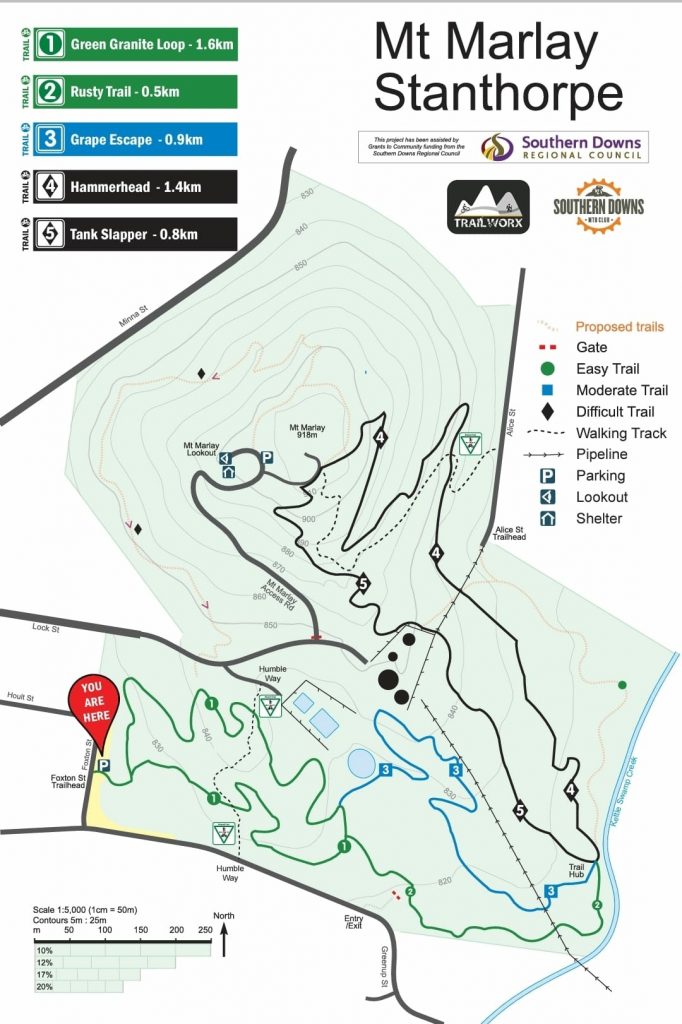
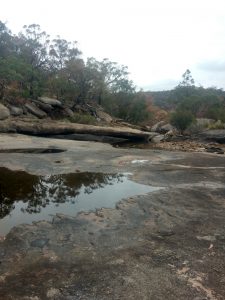
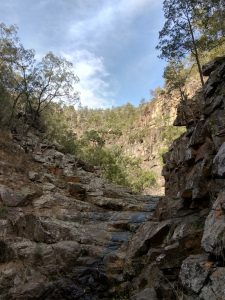
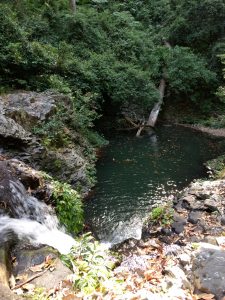
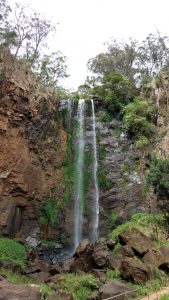
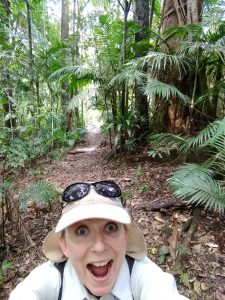


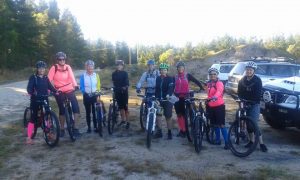 We were heralded by shrieks of awesomeness as some of the women ventured onto single track for the first time; laughs of newly formed friendships as we warmed up and peeled off the layers; and words of encouragement and advice as the newbies mixed it with the more experienced riders in the bunch. We climbed the hilly and rocky terrain of the forest, notching up the miles and the skill level, and enjoyed the relative ease of the gentle downhill sections. We marvelled at the winter weather which provided perfect conditions for the ride despite the chilly start! The bright blue sky, the cheeky breeze, the green forest, the red toadstools, the black cockatoos, the lively kangaroos and the stunning view from “the little big rock” were all there to show off what an amazing world we share (and how far we’d ridden throughout the morning!)
We were heralded by shrieks of awesomeness as some of the women ventured onto single track for the first time; laughs of newly formed friendships as we warmed up and peeled off the layers; and words of encouragement and advice as the newbies mixed it with the more experienced riders in the bunch. We climbed the hilly and rocky terrain of the forest, notching up the miles and the skill level, and enjoyed the relative ease of the gentle downhill sections. We marvelled at the winter weather which provided perfect conditions for the ride despite the chilly start! The bright blue sky, the cheeky breeze, the green forest, the red toadstools, the black cockatoos, the lively kangaroos and the stunning view from “the little big rock” were all there to show off what an amazing world we share (and how far we’d ridden throughout the morning!)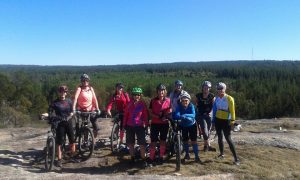
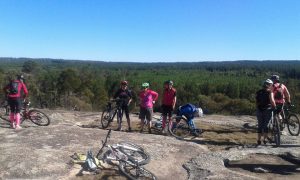
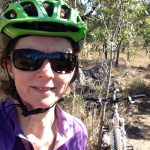 ….. or contact me – your women’s ride co-ordinator 🙂
….. or contact me – your women’s ride co-ordinator 🙂